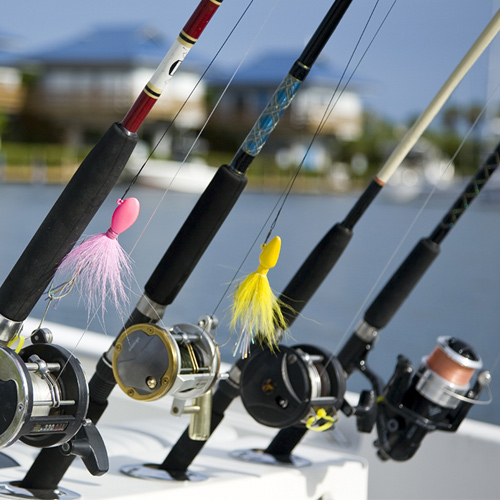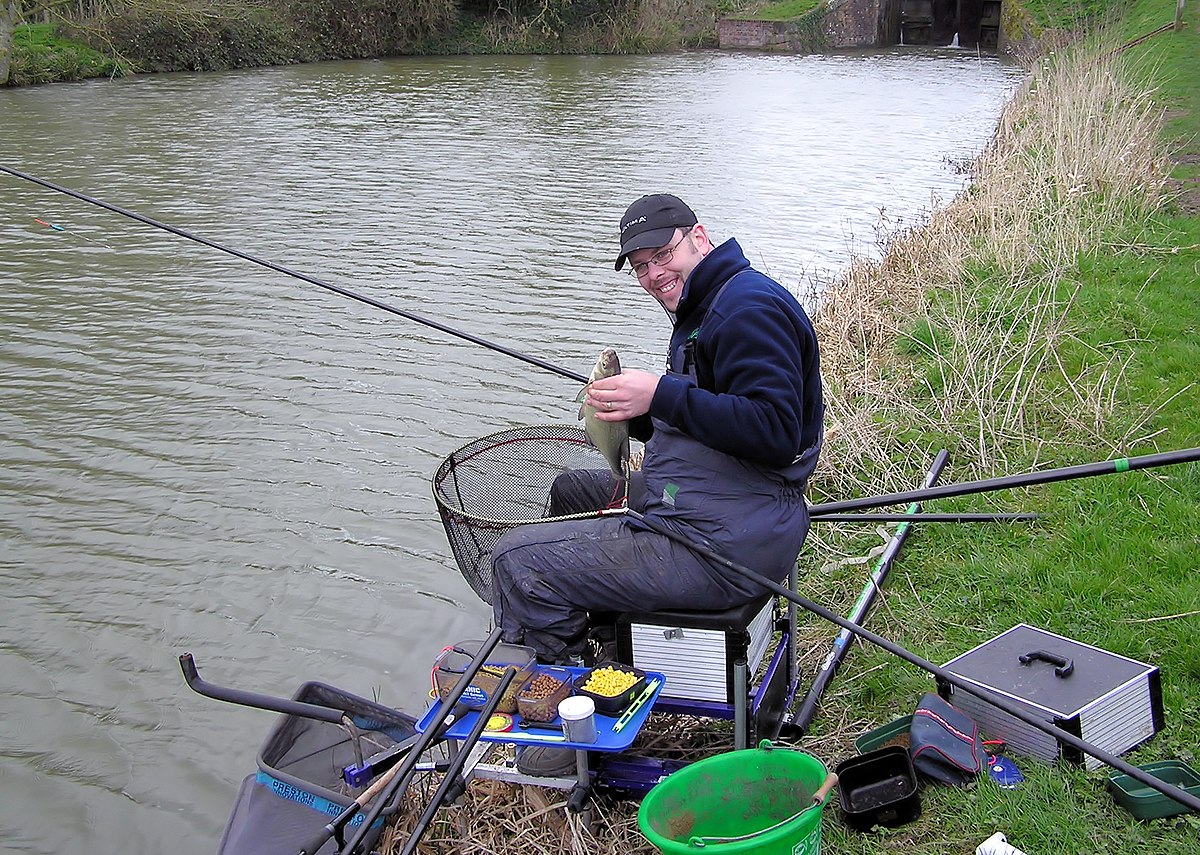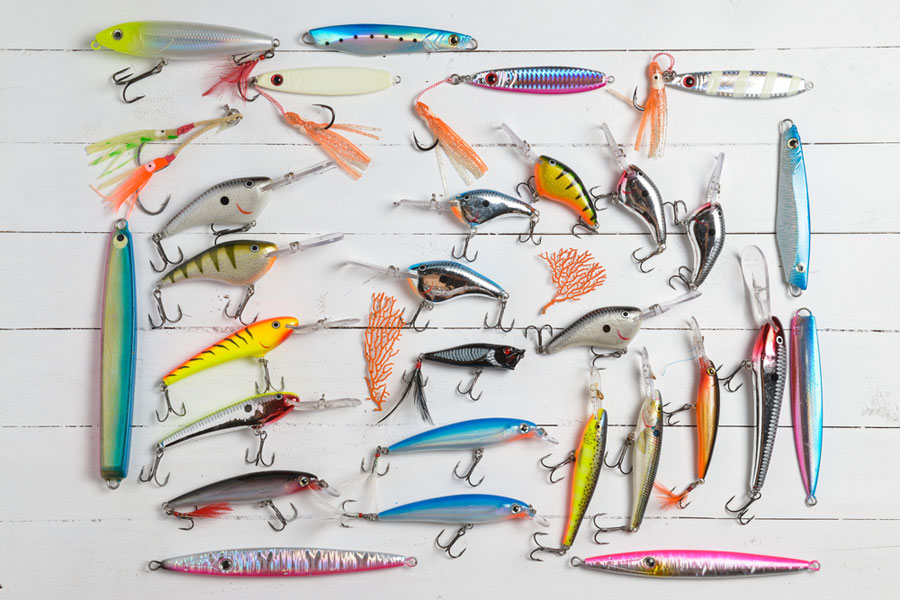Xplorer Fly Fishing beginner’s toolkit every new angler should have
The Full Overview to Fishing Fishing: Lures, Tackle, and Fly Fishing Basics for All Ability Degrees
The Full Overview to Fishing Fishing uses an extensive consider vital gear for anglers at any kind of degree. It covers different baits, take on components, and fly fishing fundamentals. Recognizing these components is essential for an effective angling experience. The overview also emphasizes the importance of seasonal methods and correct equipment maintenance. As anglers browse their options, they might ask yourself which particular products will absolutely boost their angling journeys.
Comprehending Various Kinds Of Fishing Lures
A selection of angling baits exist, each created to draw in certain sorts of fish. All-natural baits, such as pests, worms, and minnows, imitate the fish's all-natural diet plan, making them reliable for numerous varieties. Nightcrawlers are preferred for freshwater fishing, while minnows attract in bigger fish like bass and pike.
Artificial baits, including appeals and jigs, are crafted to mimic the movement and appearance of victim. These can range from brightly colored plastic worms to practical crankbaits developed to mimic swimming fish.
One more category is scent-based lures, which use odors to draw in fish from a range. These baits are specifically valuable in dirty waters.
Inevitably, the selection of lure depends upon the target types, water conditions, and fishing strategy, making it important for anglers to recognize their options and select the most effective bait for their particular angling scenario.
Important Fishing Tackle: Poles, Reels, and Lines
While selecting the appropriate fishing tackle, recognizing the interplay in between poles, reels, and lines is vital for successful fishing. Fishing poles can be found in various sizes and activities, each created for specific fishing techniques and species. A shorter rod gives far better control for close-in angling, while longer rods permit greater spreading distance.
Reels, offered in spinning, baitcasting, and fly choices, need to match the rod and line kind to assure smooth operation. The selection of reel greatly affects the angler's capability to recover catches successfully.
Lines, classified by product and stamina, offer as the connection in between the rod and the fish. Monofilament, fluorocarbon, and knotted lines each offer distinct advantages, affecting exposure and sensitivity. Choosing the proper mix of pole, reel, and line is important, as it straight influences casting performance, sensitivity to bites, and overall angling success. Each component should function harmoniously to boost the angling experience.
Choosing the Right Fishing Lures for Your Target Variety
Choosing the ideal fishing tempts needs an eager understanding of the choices of target species - Xplorer Fly Fishing. Aspects such as water conditions and local forage play a significant duty in determining which tempts will certainly be most efficient. By aligning appeal selection with these variables, fishermens can boost their chances of success on the water
Understanding Variety Preferences
Choosing the right angling tempts calls for an understanding of the certain preferences of target species, as various fish are brought in to varying colors, movements, and dimensions. For example, bass are typically attracted to bright, fancy appeals that resemble their all-natural victim, while trout may like a lot more refined, all-natural shades. Furthermore, the dimension of the attraction should match the size of the fish being targeted; larger types commonly react much better to larger appeals. Motion likewise plays an important role; some fish are drawn in to appeals that imitate irregular habits, while others favor a stable, smooth obtain. By acknowledging these choices, fishermens can properly boost their possibilities of an effective catch, customizing their tackle to the special characteristics of each species.
Matching Lures to Conditions
The effectiveness of fishing attractions usually rests on the prevailing environmental problems. Anglers must consider elements such as water temperature, quality, and current when selecting the appropriate appeal. In murky waters, bright or loud attractions often tend to attract attention, while in clear problems, even more natural shades and subtle activities are efficient. Seasonal adjustments also play an important duty; during spawning periods, fish may respond better to attractions mimicking their prey. Furthermore, time of day influences fish task; dawn and dusk are prime-time televisions for utilizing topwater appeals. Inevitably, understanding these problems enables fishermens to match their attractions to the target types, boosting their possibilities of an effective catch. Expertise of ecological dynamics is vital to effective appeal choice.
The Essentials of Fly Fishing Equipment
A strong understanding of fly angling gear is essential for both beginners and seasoned fishermens alike. The fundamental elements of fly angling gear include the fly pole, reel, line, and flies. The fly pole, typically longer and more adaptable than conventional fishing pole, enables specific spreading. Picking the right rod relies on the fishing setting and target types.
The reel, developed to hold the fly line, plays a significant duty in taking care of line retrieval and drag. Fly lines are specialized for different methods, from drifting to sinking, and have to be matched to the pole's specs.
Lastly, flies copy water insects and bait fish, and be available in various designs such as completely dry flies, fairies, and banners. Choosing the appropriate fly is crucial, as it needs to represent the regional fish species and problems. Mastery of these fundamental components creates the foundation for successful fly fishing experiences.
Tips for Organizing Your Fishing Tackle Box
Organizing an angling take on box can greatly boost a fishermen's performance on the water. By arranging take on by kind, making use of containers effectively, and labeling everything plainly, anglers can quickly access their equipment. These techniques not just conserve time yet likewise ensure that vital things are constantly handy when needed.

Type by Kind
Arranging tackle by kind warranties that anglers can rapidly find the gear they need when the ideal fishing opportunity occurs. Organizing items such as hooks, appeals, and sinkers right into designated sections improves effectiveness and reduces stress during getaways. For instance, classifying baits by type-- live, man-made, or iced up-- allows for swift decisions based upon Our site angling problems. Tackle boxes can be split right into areas for very easy accessibility to certain equipment, such as fly angling basics or deep sea equipment. This method not only saves time yet likewise assists in preserving the problem of the take on, making sure every little thing stays in perfect form. By implementing this organized technique, anglers can focus a lot more on the fishing experience instead of browsing for misplaced things.

Usage Containers Wisely
Using containers successfully can greatly enhance the organization of an angling tackle box. Anglers ought to ponder using a range of containers, such as tiny take on trays, zip-lock bags, and compartmentalized boxes, to separate different kinds of gear. When browsing for certain items but likewise prevents tangling and damages, this approach not just conserves time. For circumstances, hooks, lures, and weights can each have assigned containers, assisting in simple access during fishing expedition. In addition, clear containers allow for fast exposure of contents, enhancing the option process. It is additionally valuable to ponder the size and form of containers to make best use of space within the take on box. By implementing these business approaches, fishermens can preserve an extra effective and satisfying angling experience.
Tag Whatever Plainly
Clear labeling is necessary for preserving an orderly angling tackle box. By plainly noting containers and areas, anglers can conveniently find details things, conserving time and lowering stress during angling journeys. Making use of water-proof tags guarantees toughness in numerous climate condition. It is suggested to classify things such as hooks, appeals, and line types, supplying fast gain access to when required. Additionally, color-coded tags useful site can enhance presence and organization. Consistently upgrading tags as products alter aids preserve a reliable system. When fishing with others, clear labeling is especially useful, enabling very easy sharing and understanding of tackle plans. Inevitably, a well-organized take on box with clear labels cultivates a more effective and pleasurable angling experience.
Seasonal Fishing Strategies and Gear Adjustments
As the periods modification, fishermens must adapt their methods and equipment to enhance their opportunities of success. In spring, for example, fish become a lot more energetic as water temperature levels climb, motivating fishermens to utilize lighter take on and dynamic baits to lure attacks. Throughout summer season, the warmth pushes fish to much deeper waters, read here demanding heavier gear and techniques such as trolling or deep-water jigging.
In autumn, as fish get ready for wintertime, fishermens must concentrate on areas with plentiful food resources, using larger baits to attract them. Winter season fishing usually needs customized equipment, consisting of ice angling equipment and warm clothing, as fish come to be inactive in cool water.
In addition, adjustments in line selection, attraction shade, and lure kind are vital throughout the year (Xplorer Fly Fishing). By remaining attuned to seasonal patterns and making these equipment changes, fishermens can improve their effectiveness and enjoy a fruitful angling experience no matter of the moment of year
Maintenance and Care for Your Fishing Devices
Proper upkeep and take care of angling equipment are important for assuring durability and top efficiency. Fishermens must frequently examine their rods, reels, and lines for indicators of wear, such as fraying or corrosion. Cleaning up equipment after each fishing journey is essential; freshwater needs to be used to rinse salt and debris, stopping rust and accumulation.
Reels call for lubrication to preserve smooth operation; using the suitable oil to relocating parts can enhance their lifespan. Pole overviews must be looked for cracks or chips, as they can affect spreading and line stability.
Keeping gear in a dry, temperature-controlled atmosphere aids prevent damages from humidity or extreme temperatures. Additionally, changing old or damaged take on, such as attractions and hooks, guarantees excellent performance throughout angling outings. By sticking to these upkeep methods, fishermens can significantly prolong the life of their equipment and take pleasure in a much more successful angling experience.
Often Asked Questions

What Are the Best Neighborhood Fishing Places for Beginners?
The very best local fishing areas for beginners usually include calm lakes, quickly accessible rivers, and assigned fishing fish ponds. Recreational locations and regional parks often use risk-free atmospheres with abundant fish populations, making them ideal for novice fishermens.
Just How Can I Identify Fish Species in My Location?
To determine fish types in an area, one can observe physical features, get in touch with neighborhood guidebook, make use of smart device apps, or engage with neighborhood fishing communities for understandings and identification tips details to the area.
What Licenses Do I Need for Fishing?
To fish legitimately, one usually needs an angling certificate, which varies by area. Furthermore, some locations might call for details permits for certain species or fishing techniques, stressing the relevance of inspecting neighborhood policies prior to angling.
Exactly How Do Weather Influence Fishing Success?
Climate condition substantially influence angling success. Variables such as rainfall, temperature, and wind affect fish actions, feeding patterns, and habitat. Anglers usually adapt their techniques based upon these problems to boost their chances of an effective catch.
What Prevail Fishing Decorum Rules to Adhere To?
Typical angling decorum rules include appreciating others' area, preventing sound, cleansing up after oneself, complying with neighborhood laws, and exercising catch and release when suitable. These standards foster a harmonious atmosphere for all anglers.
Fishing rods come in various sizes and actions, each developed for certain angling methods and types. A strong understanding of fly angling equipment is necessary for both newbies and seasoned fishermens alike. Organizing an angling tackle box can substantially enhance a fishermen's effectiveness on the water. Sorting take on by type guarantees that anglers can swiftly locate the equipment they require when the best angling possibility emerges. The finest neighborhood angling areas for novices typically include tranquil lakes, quickly available rivers, and designated angling fish ponds.